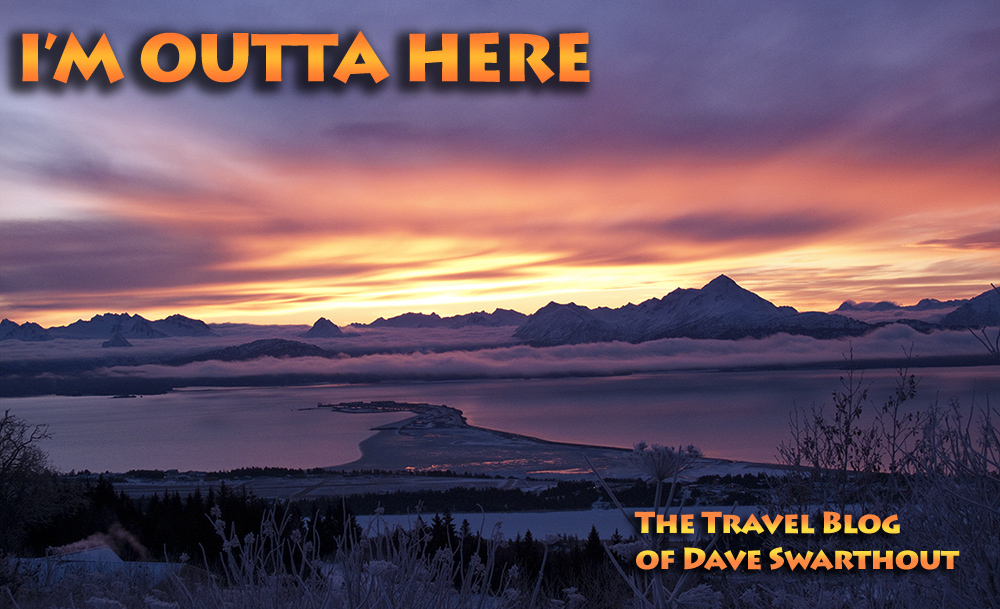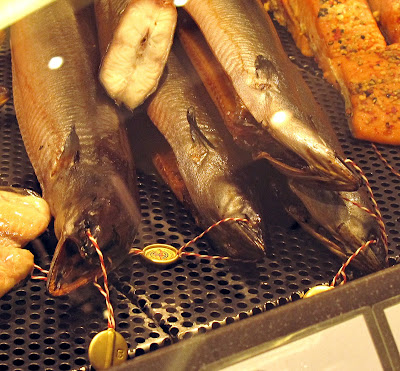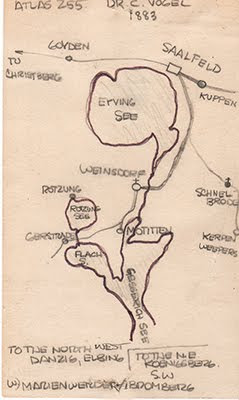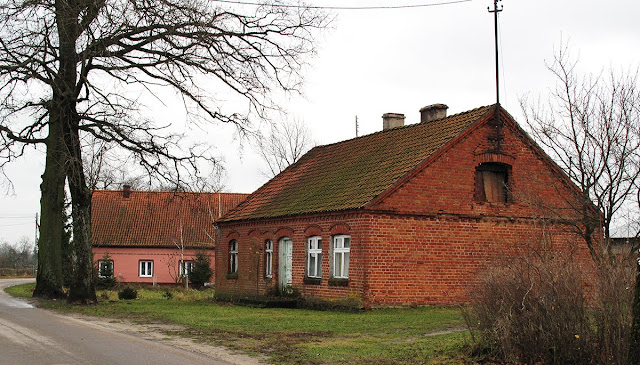Biking. They belong with this entry but I didn't have time to upload them up before.
+++++++++++++++++++++++++++++++++++++++++++++++=
I know we've all been joking about the bikers here and how indomitable they are. The weather doesn't faze them, traffic doesn't slow them down, motor scooters sharing the same bike lanes don't seem to worry them. I left the hotel this morning intending to ride over to see and photograph a windmill. There are only a few of them left and I haven't seen one as yet so I thought, I'll head southwest and check out the closest one, the one called Reiker Moller. But when I got down to the street it was pouring at least as fast as it last night. My attitude about riding in the rain has changed I think, but it hadn't changed enough to get me onto the bike in this stuff. I walked to the bagel place up the street for breakfast.
While I was sitting there looking out the window at the traffic I was forced to take note: I'm seeing bikers, plenty of people out biking, as usual. I decided to do a little photo gallery of people riding bikes in Amsterdam. Eventually I'll put them on Picasaweb but I'll include a few here.
In all of these photos, please know that it is raining steadily. Also these are cropped portions of larger images that I took at my camera's maximum telephoto setting, about 5x. Some people are better dressed for it than others. Women bike along, wet hair streaming out behind. Temperatures are in the high forties maybe, hypothermia weather.
I hate how this blogging software treats image placement. Good luck with trying to make pictures look intentionally placed, even planned, but whatever.
Notice the gal on the left. She does not like the fact that I'm photographing her as she talks (and rides).
Biking is easier than driving but it isn't problem free. Let's say you want to go to a popular spot, a restaurant, a market, or a museum. You've got to find a place to put your bike, and by "place" here I mean you must find some sort of immovable object that, in addition to being immovable, offers a means of attaching your bicycle to it. You may learn that you have to "park way down the street" where there's a bike rack, or fence, a railing, a utility pole, something, anything to lock your bike to. And in these places every conceivable place is often already taken.
These bikes never come indoors either. Nor are they made for climbing hills. Most bikes you see are in only mediocre condition while some are close to rattling themselves apart. I have seen only two bikes of the sort that I would call a "road bike," at least what we in Homer refer to as a road bike; those were being driven by jocks, and both were seen in the Amsterdam Bos (a park) today, a Sunday when the bike nuts are off work. You don't see many hard core bicyclers here. Because everyone bikes, bicycling isn't as special as it is back home, I'm guessing.
These bikes are heavy. The one I have must weigh at least 50 lbs. But there are no hills anywhere so the weight of the bike isn't all that important. Durability and simplicity are what's important. Most bikes are single speed with a disk front brake and pedal brakes in the rear hub. These are the so called "coaster brakes" used on American bikes when I was a kid. To stop, you just reverse the pressure on the pedals as if to start pedaling backwards; the harder you push back, the quicker the stop. After years and years of handbrakes these took some getting used to.
The drive chain is always enclosed. This saves you from getting grease stains on your clothes or worse, getting your clothing caught in the chain where it will not only get greasy but might be ripped apart in the bargain. It also protects the chain from moisture.
It can stay nice and oily in its little case. This is doubly important because these bikes are outside all the time. They seldom, if ever, see the inside of a garage or apartment.
Nobody wears helmets. Some people wear hats when riding in a rainstorm but many don't. And bikers don't really follow the rules. They ignore signal lights, choosing instead to look at traffic conditions, evaluate the situation, and then quickly doing whatever it takes to move forward, almost without thinking it seems. A perfectly respectable gentleman will suddenly grow tired of waiting for the light to change in his favor. He'll just jump out there and cross the road, be it two lanes or three, no problem. But cars aren't the only vehicles out there. You also have trams, and buses, and motor scooters, not to mention scores of other bikers, most of whom consistently disregard the same laws as you. This makes for many an awkward encounter in intersections, I can tell you. And I must admit, I'm learning to ignore traffic laws as well. You learn to disregard them because in order to move around on a bike you must. And then it seems like there are so many lanes on the roads: one for buses and trains, one or maybe two for cars, one for bikes and scooters, and a sidewalk for the unfortunate pedestrians. How do you know which is okay to use? Scooters and even motorcycles use the bike lanes and even the sidewalks with impunity. Okay, no let's say you need to make a left turn at a big intersection. You want to stay in the bike lane while doing it? Good luck. There are as many ways for a biker to get through that intersection as there are excuses to stop smoking (or eating) and you'll see them all in the first hour you spend on the streets.
Many bikes are black. They look pretty much alike. Why have a bike that stands out, that attracts attention? The more likely it is to get stolen. A nice plain, undistinguished, replaceable, and black, bicycle is what one needs in Amsterdam. Disc brakes? A 27 speed derailleur-gear system? Total overkill for a town like Amsterdam.
Yet, no matter how decrepit a bike is, they are always locked when the owner goes into a store or coffee shop or to pick up some groceries on the way home from work. And there's not just one lock but two. The main lock is essentially a piece of heavy chain fitted with a locking device to allow it to connect to itself. It's reminiscent of the one I used to lock my Honda 750 motorcycle back in 1974.
In the inset you'll notice a device that looks a little bit like a handbrake assembly. It's a rear wheel lock that's attached to or is part of the bike frame. The key can be withdrawn from it only if it's in the locked position as shown in the picture.
The other lock, the chain lock, must be threaded between whatever immovable object you located in step one and both the front wheel of your cruiser and its frame, and then to that part of the immovable object that has offered itself to be attached. I call it a chain lock not because it locks the drive chain of the bike but because it consists of about 20 inches of big links of hardened chain which can be connected to itself and is flexible enough to enable this "threading" I talked about earlier.
Okay, you're ready to lock your bike up at last. Remember to lock the rear wheel first so that the other key on the keyring can be brought to bear on the chain lock. Attach the chain to the immovable object and then push it through the spokes of your front wheel making sure it goes around the frame too, finish threading it on your hands and knees if required until finally you get to push the locking pin home, then turn the key one-quarter turn, remove and pocket the key. You're free to go shopping.
Here's where I've been leaving my green-fendered bike at night. This stand is just down the street from the Euphemia Hotel.
There's more to the story but I have an errand to run. Bikes do need maintenance occasionally, as mine does now. I was way over in the western part of the city at a place called the Amsterdam Bos on my way to one of those windmills I spoke about earlier when I discovered I had a flat. It was Sunday, I had no tools and no way to get the bike back home. So I locked it to a convenient post until I figure out how to fix it. I'm on my way to the rental shop, 2 miles distant, to see what they recommend. ;-)
Here's a couple of other photos that belong here. The tram stations are places where lots of people leave their bikes while they're at work. Here are a couple of photos of one in the south part of the city where I went with my borrowed tools to fax that flat.
Here's where I've been leaving my green-fendered bike at night. This stand is just down the street from the Euphemia Hotel.
There's more to the story but I have an errand to run. Bikes do need maintenance occasionally, as mine does now. I was way over in the western part of the city at a place called the Amsterdam Bos on my way to one of those windmills I spoke about earlier when I discovered I had a flat. It was Sunday, I had no tools and no way to get the bike back home. So I locked it to a convenient post until I figure out how to fix it. I'm on my way to the rental shop, 2 miles distant, to see what they recommend. ;-)
Here's a couple of other photos that belong here. The tram stations are places where lots of people leave their bikes while they're at work. Here are a couple of photos of one in the south part of the city where I went with my borrowed tools to fax that flat.









































.jpg)








